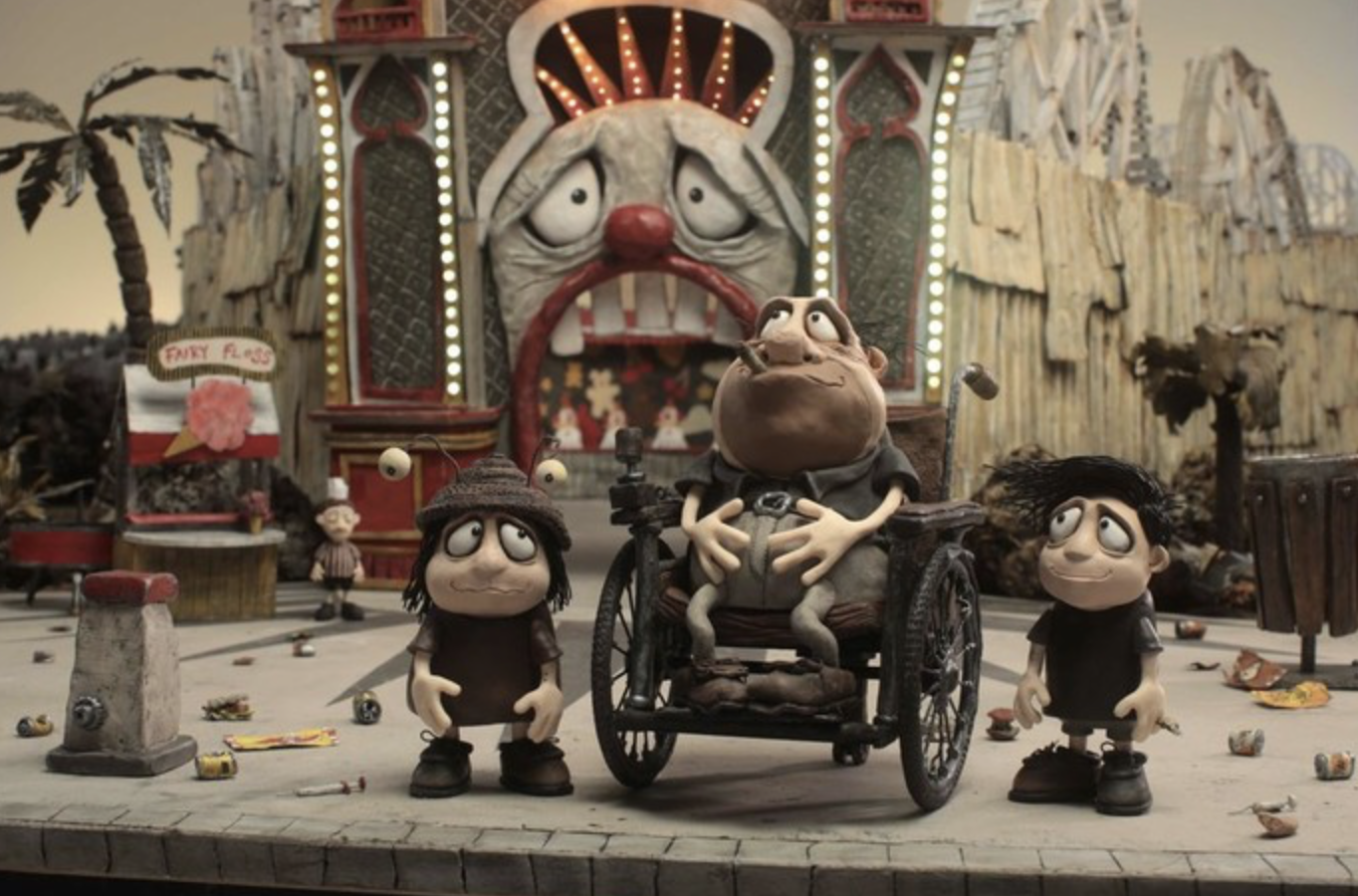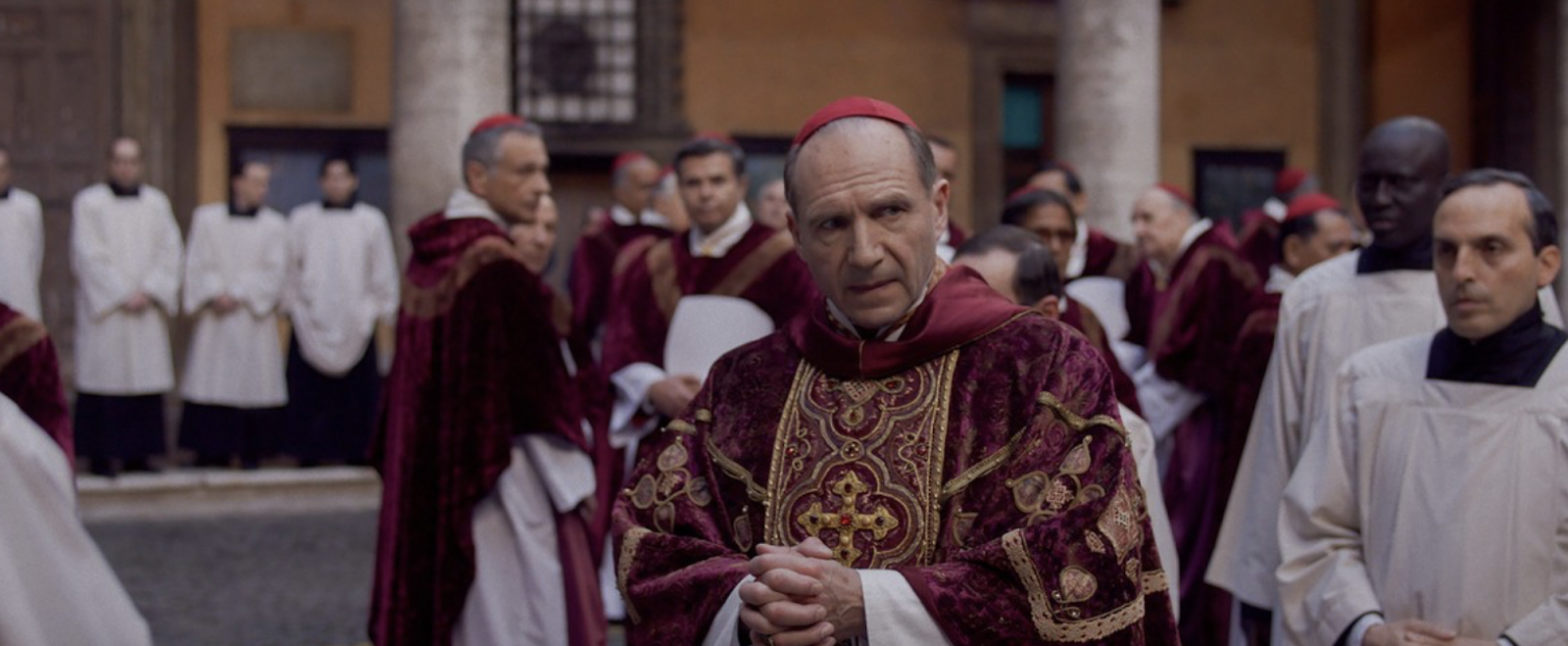 |
| Hugh Grant, Sophie Thatcher, and Chloe East in "Heretic" Photo Credit: Imdb.com |
Writers-directors Scott Beck and Bryan Woods have now made their stamp on religion-themed scares with their psychological-horror thriller, “Heretic.” Boasting a devilish lead performance, a thought-provoking story, and an enticing setup, Beck and Woods bring us a horror film that delivers on emotion, smarts, and chills.
Sister Barnes (Sophie Thatcher) and Sister Paxton (Chloe East) are Mormon missionaries trying to look for new converts. On one of their outings, they visit the house of Mr. Reed (Hugh Grant), an enigmatic, yet seemingly kind individual. However, Barnes and Paxton soon realize he has trapped them in a dangerous game, one that will test just how strong their beliefs really are.
While we saw Grant go against his good-guy type and play a humorous villain in “Paddington 2,” he maintains some of his usual bumbling wit near the beginning of this film, only to go somewhere deeper on the spectrum of villainy this time around. Here, he portrays an individual who has an unsettlingly affable and very calculated way of presenting himself as he tries to keep Sisters Barnes and Paxton ensnared in his trap. You can see him absorbing the situation as the Sisters enter his house and he plans what comes next, and Grant’s disquieting performance always keeps you on edge as you watch him make the steady shift from his familiar Hugh Grant-persona to something more on the malevolent side. All of this makes for one of the year’s finest performances as Grant’s sense of menace grows stronger and his character brings the Sisters deeper into his game. For someone who almost always portrays nice-guy characters, Grant looks like he’s relishing this opportunity to slowly shed the charming persona we’ve come to know through decades of him being in romantic comedies. Grant will certainly make a believer out of you with what he can do when portraying a villainous character, and I can’t wait to see in which genre he does this next.
Thatcher and East have terrific chemistry as they show a believable naïveté as they walk into what seems like a benign situation. When they become more and more aware of what’s happening, Thatcher and East are engaging to watch as they try to take in their surroundings and be on their guard for what Mr. Reed might have planned for them. They provide great work in exhibiting how they try to understand this danger that breaks their sheltered view of the world, and Thatcher and East show a thrilling increase in prowess and resilience as they try to beat Mr. Reed at his own game.
The screenplay by Beck and Woods creates a slow-burn story that’s all the more nerve-racking because you wait to see what kind of move Mr. Reed will spring next. While this movie is a great horror story, it’s also an intriguing and in-depth view of the characters, with each section of the movie revealing things about them that drive the next section of the film. There’s a good deal of the runtime that’s dedicated to the immersive dialogue, but the tension never falters because of how well the narrative constructs a scenario that has the characters question their beliefs. Aside from this, the narrative boasts a clever setup of different parts of the house acting as figurative states of living, being in purgatory, and being dead, and it offers fascinating viewing to see how the faith of the characters plays into each section.
Beck and Woods created unbearably tense situations as writers on the first “Quiet Place” movie, and as directors, they translate that screenplay talent when taking the directorial reins of “Heretic.” With just a limited cast and location, they’re able to maintain the apprehension throughout as we’re placed in close quarters with the characters, having us experience the layers of the discussions that the characters have, while also giving us an unease of being trapped with a stranger. For this sense of closeness and claustrophobia, Beck and Woods get help from cinematography by Chung Chung-hoon. In terms of lensing the interiors of an odd house, his talents come through, calling to mind how memorably he photographed the Neibolt house set-piece in “It: Chapter One.” Here, he captures the details by framing the sections of the house in such a way that encourages us to move our eyes across the screen to take in every detail and figure out what it means in the overall scheme of Mr. Reed’s treacherous game. He employs a slow and smooth camera that eases us into the situation and maintains such movements to keep that simmer going as you remain on the lookout for clever visual clues.
2024 has had its share of superb original horror films, like “The Substance,” “Oddity,” “Longlegs,” and “Late Night with the Devil.” Now, “Heretic” can easily join their company. With this film, Beck and Woods show that they can be a great filmmaking pair when contributing to the intelligent horror that we pray for.
Grade: A


